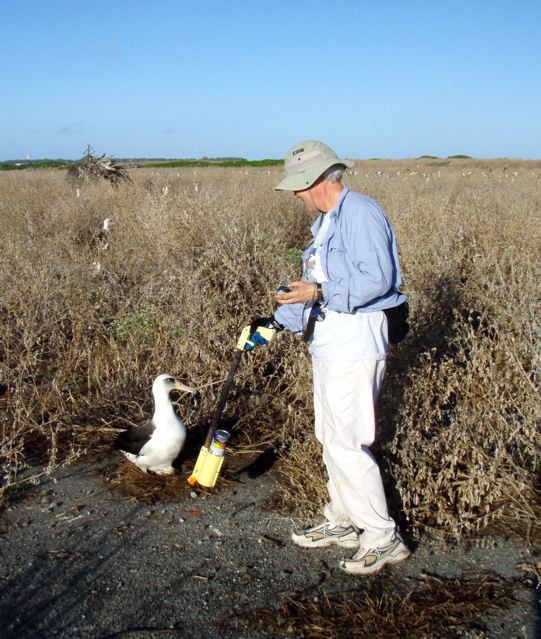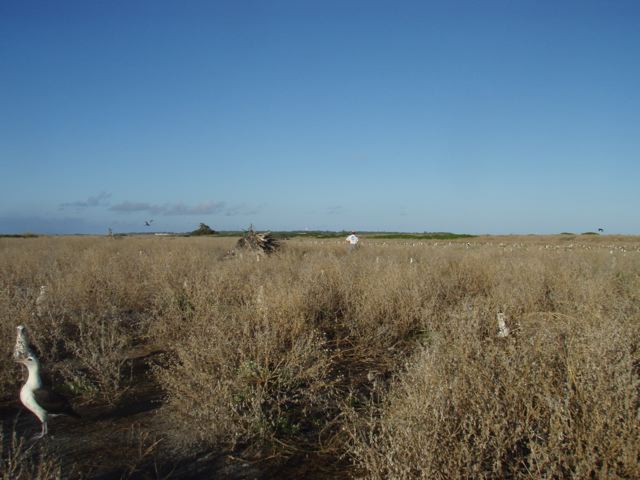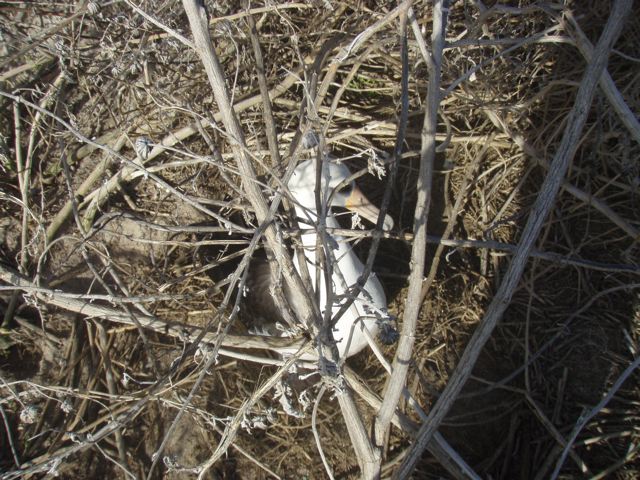Published in the Ocean Watch column, Honolulu Star-Advertiser © Susan Scott
December 21, 2007
MIDWAY ATOLL » When I said I was going to Midway Atoll to help count albatrosses, the most common question people asked me was, “How do you count a million birds?”
I didn’t know. I’d heard previous counters talk about tallywhackers and paint sticks, but I couldn’t picture how the system worked.
Now, after a week at Midway, my arms are sore, my shoes are orange and my calves are scratched and bruised.
That counting system has become my life.
Here’s how it works: A team of four counters lines up side to side a few feet apart. We then walk forward at the same pace counting nests in our path with a hand-held counter called a tallywhacker. Each nest with an egg in it and a bird on it represents two adults, because albatross couples take turns brooding.
To keep track of where we’re walking and ensure we count all nests, each person marks a counted nest with a splotch of orange, water-soluble survey paint. We apply this nontoxic substance with a paint stick, a tool that looks like a 3-foot-long squirt gun.


At the end of a section, the four people reform the line and come back, counting another strip of birds.
The system is simple and elegant but has its pitfalls. Real pitfalls. Petrels and shearwaters, both burrow-nesters, have dug holes around some of the albatross nests.
This is a good thing, because it means the rats are gone and the birds are back. It’s a bad thing, though, when you have to walk through a particularly crowded colony. “Burrow,” we call out when we’ve stepped too close to an entrance and collapsed it. Then the team stops while the person bends to scoop guano-laced dirt from the opening.
Other hazards are hook-shaped beaks. Brooding albatrosses are amazingly tolerant of human legs passing by. But get too close for too long and these protective parents will let you know you’ve pushed your luck. Their pecks don’t usually break the skin, but they hurt and sometimes leave a bruise.
Collapsed burrow entrances and albatross nips are one thing; getting through the weeds to the nests is another. A non-native plant called Verbesina is an awful pest here. This plant’s woody stalks grow up to 6 feet tall and form thickets that in places are hard to push through.
 Verbesina
Verbesina
At the end of the day, we counters are tired, dirty, aching and paint-splattered. And we love it. I know I speak for all 12 of us when I say it’s a privilege to live and work among these marvelous seabirds and to do something to help them.
They need help. In the 19th century, feather and egg hunters killed albatrosses by the millions, decimating their populations. In the 20th century, people took nearly all of their nesting sites, making recovery nearly impossible.
Today, blackfooted albatrosses dive, and drown, on baited longline fishing hooks so often the birds’ numbers have declined alarmingly. In order to list them as an endangered species, though, which will mandate protection, federal biologists need accurate counts.
Also important in these counts is the information they bring managers about the worldwide breeding population of Laysan albatrosses.
So how do we count a million birds? We don’t. We count half a million. And the way to do that is easy: One (squirt), two (squirt), three (squirt) …
The spectacle of Midway is worth leaving home for.
